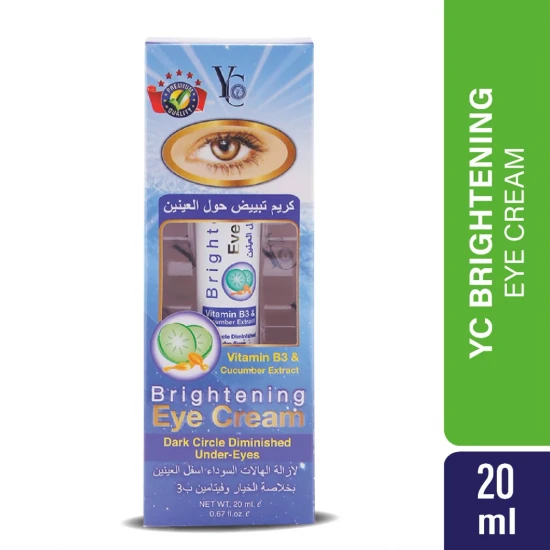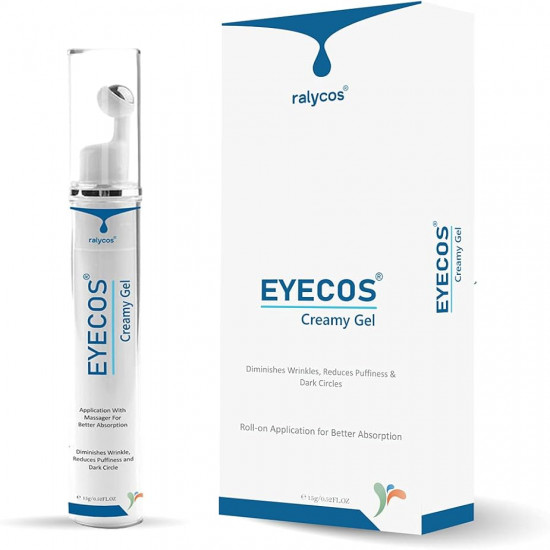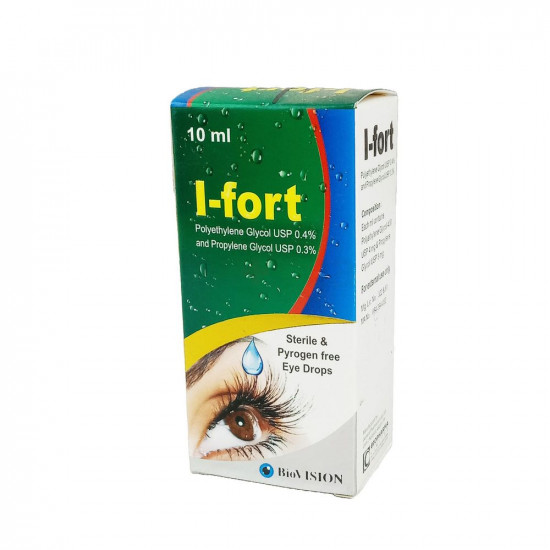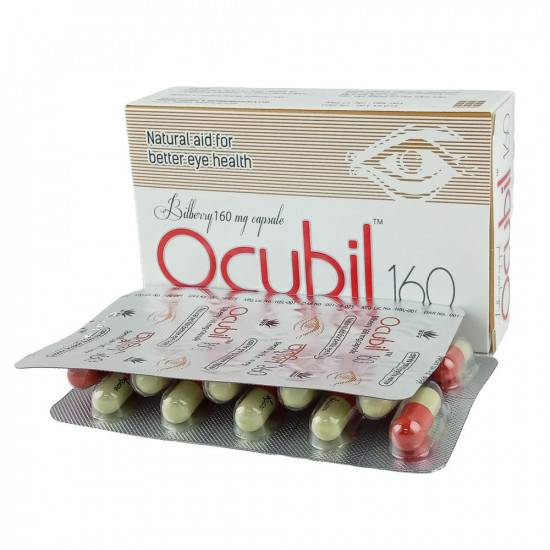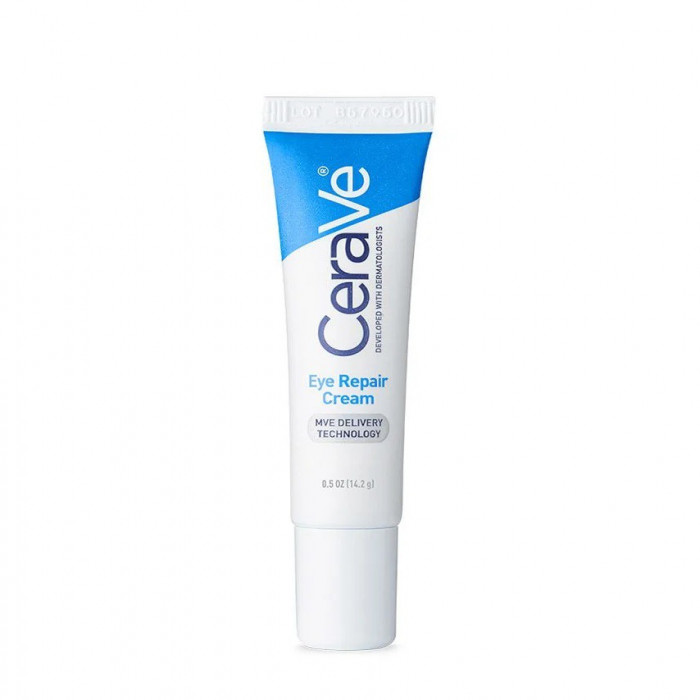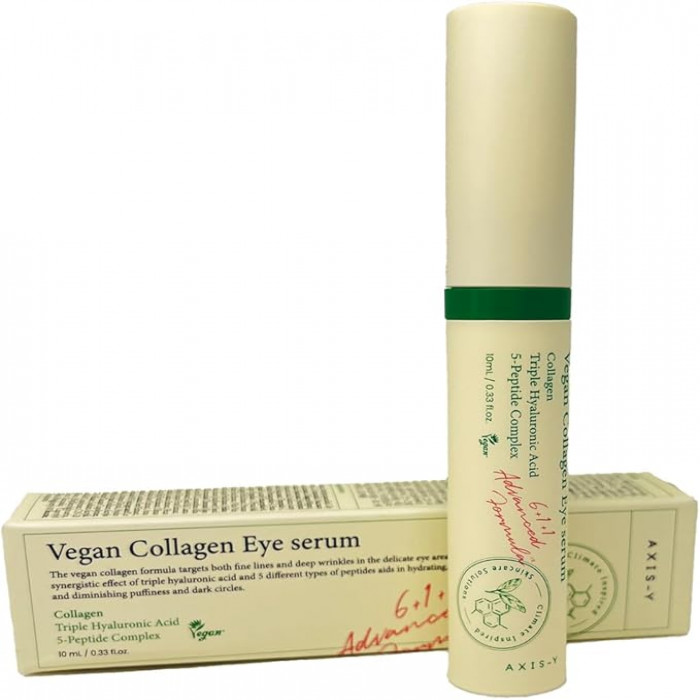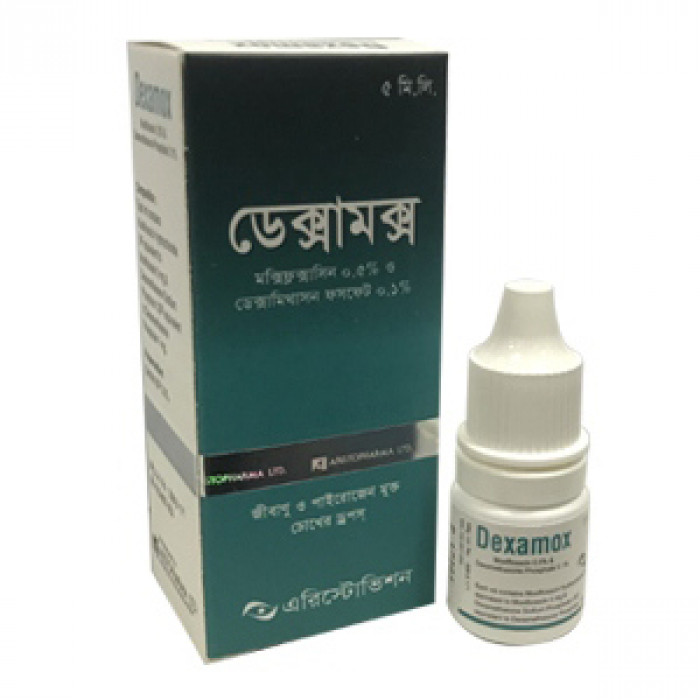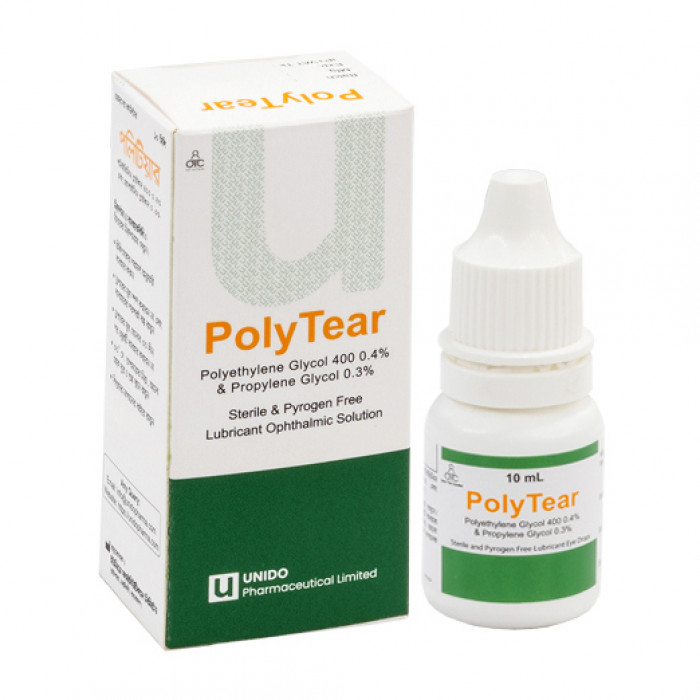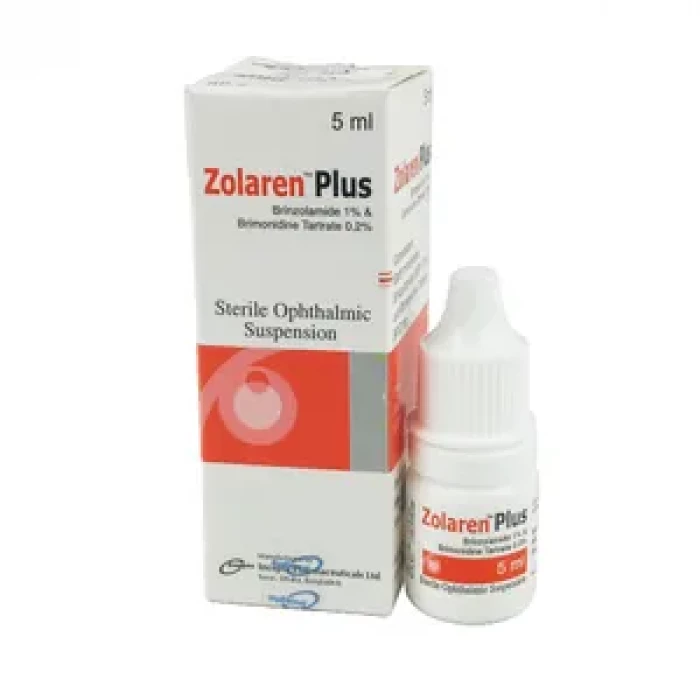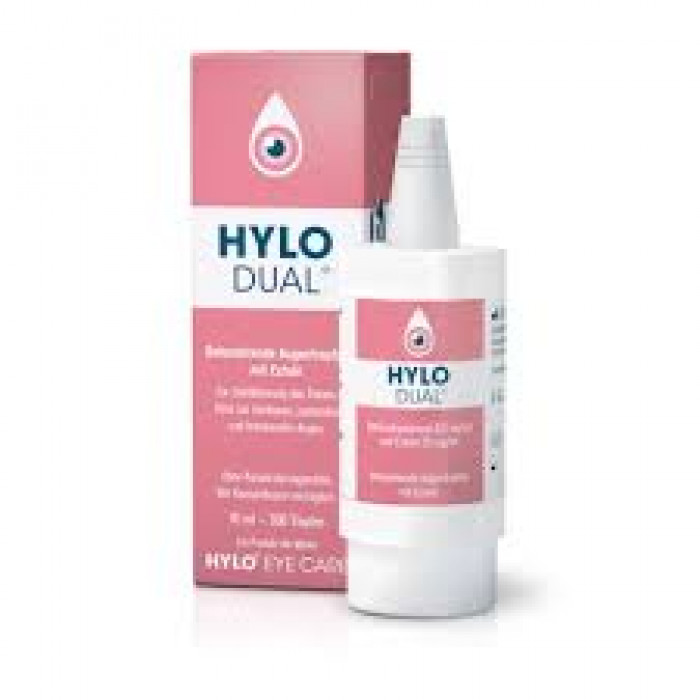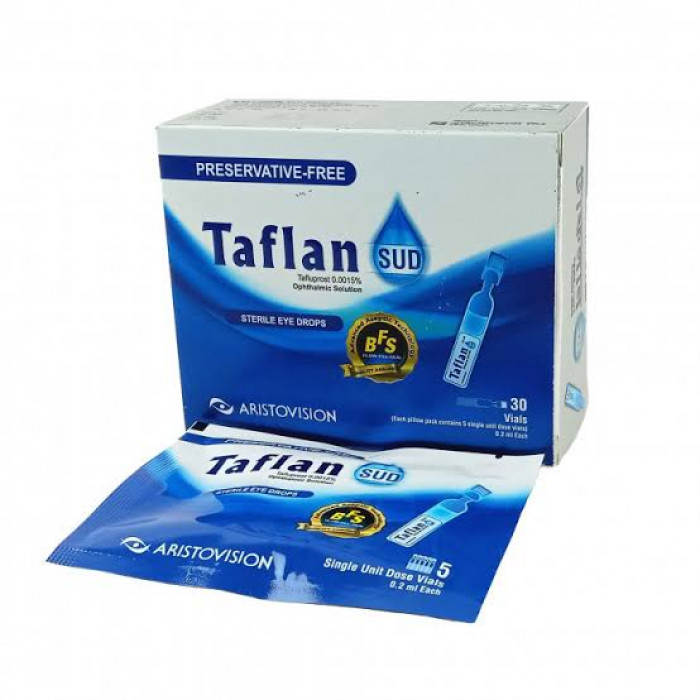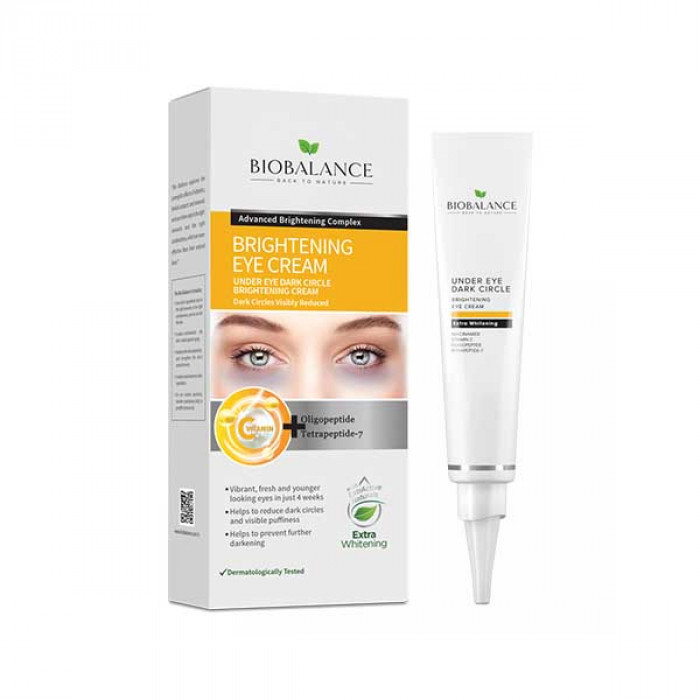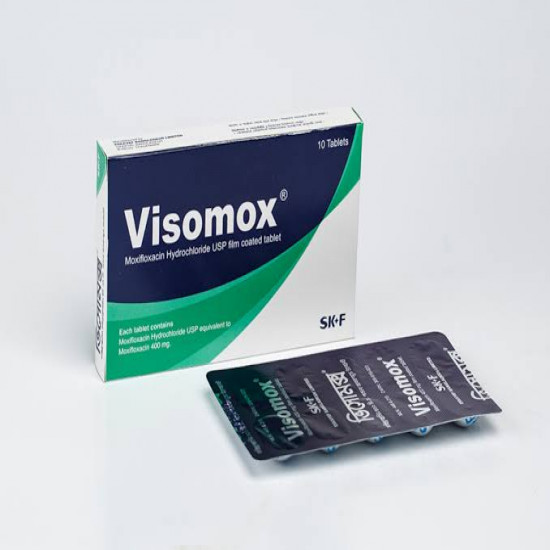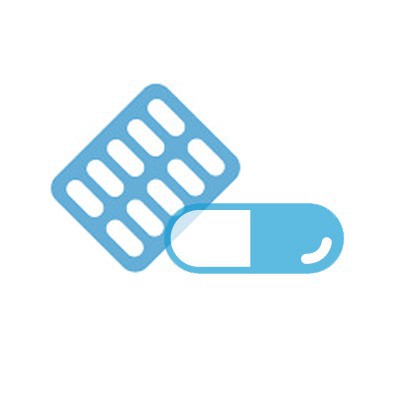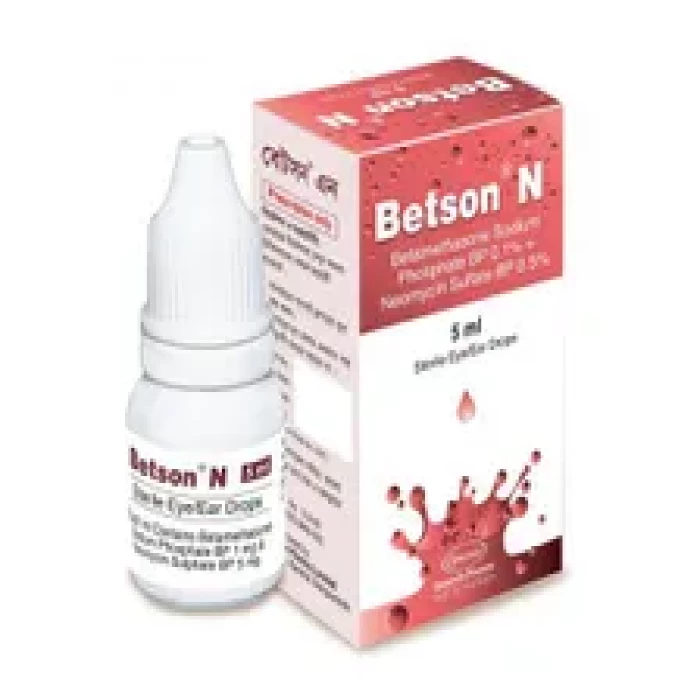
✔ 100% Authentic Product
👁️ Currently Viewing 1655
✅ Description:
Betson-N Drop is a combination of medicine that is used to treat various types of bacterial ear or eye infections. It prevents the growth of the bacteria that cause infection in the eyes or ears. Betson-N Drop is to be used as per the label instructions or as suggested by your doctor. This medicine must be applied only to the affected eye or ear and use it regularly to get the most benefit. The course of the medicine should be completed even if you feel better. You must wash your hands before administering the medicine. Do not use it more than the recommended dose. The most common side effects of it are eye irritation or ear irritation, watery eyes, burning sensation, etc. These are usually mild and short-lived. Consult your doctor if any of the side effects persist or worry you. Before using it, tell your doctor if you have an underlying disease or are taking medicines for any health condition. The medicines that are used externally usually do not get affected by other medicines, however, you should let your doctor know if you are taking any medicines to ensure safety. Ask your doctor for advice if you are pregnant or breastfeeding.
Uses of Betson-N Drop
Bacterial eye / ear infections
Side effects of Betson-N Drop
Common
Erythema (skin redness)
Swelling
Itching
How to use Betson-N Drop
This medicine is for external use only.Take it in the dose and duration as advised by your doctor. Check the label for directions before use. Hold the dropper close to the eye/ear without touching it. Gently squeeze the dropper and place the medicine inside the lower eyelid or ear. Wipe off extra liquid.
How Betson-N Drop works
Betson-N Drop is a combination of two medicines: Betamethasone and Neomycin. Betamethasone is a steroid which blocks the production of certain chemical messengers (prostaglandins) that make the eye/ear red, swollen and itchy. Neomycin is an antibiotic. It stops bacterial growth in the eye/ear by preventing the synthesis of essential proteins required by bacteria to carry out vital functions.

Quick Tips
Betnesol-N Eye/Ear Drops is used to treat bacterial infections and inflammation of the eye/ear.
Do not use it for more than the prescribed duration as it may cause secondary infections.
Do not touch the tip of the dropper to any surface to avoid contamination.
Stinging sensation may occur for 1-2 mins. Notify your doctor if it persists for longer.
It may cause short term blurring of vision when used in the eyes. Use caution before driving or using machines.
Make sure to use within 4 weeks of opening the bottle.

Brief Description
Indication
Allergic and inflammatory conditions of the eye & ear, otitis externa, uveitis, marginal keratitis, allergic conjunctivitis, blepharitis, episcleritis
Administration
Eye Ointment: Apply ¼ inch long to the lower eye lid 2-3 times daily and/or at night.
Adult Dose
Eye, Ear & Nasal Drops: Eye: 1 drop instilled into the eye every one or two hours until control is achieved, when the frequency may be reduced. Ear: 2 or 3 drops instilled into the ear, every two or three hours until control is achieved, when the frequency can be reduced. Nose: 2 or 3 drops instilled into each nostril two or three times daily. Eye Ointment: It should be applied thinly and evenly to the conjunctival sac at night (If eye drops used during day) or 3-4 times daily (if ointment used alone).
Contraindication
Viral, fungal, tuberculous or purulent conditions of the eye. Fungal infections of the nose or ear. Use is contra-indicated if glaucoma is present or herpetic keratitis (e.g. dendritic ulcer) is considered a possibility. Use of topical steroids in the latter condition can lead to an extension of the ulcer and marked visual deterioration. Otitis externa should not be treated when the eardrum is perforated because of the risk of ototoxicity. Corticosteroids should not be used in patients with a perforated tympanic membrane. Hypersensitivity to any component of the preparation.
Mode of Action
Betamethasone is a corticosteroid which is effective in inflammatory conditions. Neomycin sulfate is a broad spectrum antibiotic. It is bactericidal against many bacteria .
Precaution
Topical corticosteroids should never be given for an undiagnosed red eye as inappropriate use is potentially blinding. Treatment with corticosteroid/antibiotic combinations should not be continued for more than 7 days in the absence of any clinical improvement, since prolonged use may lead to occult extension of infection due to the masking effect of the steroid. Prolonged use may also lead to skin sensitisation and the emergence of resistant organisms. Ophthalmological treatment with corticosteroid preparations should not be repeated or prolonged without regular review to exclude raised intraocular pressure, cataract formation or unsuspected infections. Aminoglycoside antibiotics may cause irreversible, partial or total deafness when given systemically or when applied topically to open wounds or damaged skin. This effect is dose related and is enhanced by renal or hepatic impairment. Although this effect has not been reported following topical ocular use, the possibility should be considered when high dose topical treatment is given to small children or infants. Nasal administration of corticosteroids is not advised if an untreated nasal infection is present or if the patient has pulmonary tuberculosis or following nasal surgery (until healing has occurred). Systemic effects of nasal corticosteroids may occur, particularly at high doses prescribed for prolonged periods. These effects are much less likely to occur than with oral corticosteroids and may vary in individual patients and between different corticosteroid preparations. Potential systemic effects may include Cushing's syndrome, Cushingoid features, adrenal suppression, growth retardation in children and adolescents, cataract, glaucoma and more rarely, a range of psychological or behavioural effects including psychomotor hyperactivity, sleep disorders, anxiety, depression or aggression (particularly in children). Visual disturbance may be reported with systemic and topical corticosteroid use.
Side Effect
Hypersensitivity reactions, usually of the delayed type, may occur leading to irritation, burning, stinging, itching and dermatitis. Topical corticosteroid use may result in corneal ulceration, increased intraocular pressure leading to optic nerve damage, reduced visual acuity and visual field defects. Intensive or prolonged use of topical corticosteroids may lead to formation of posterior subcapsular cataracts. In those diseases causing thinning of the cornea or sclera, corticosteroid therapy may result in thinning of the globe leading to perforation. Mydriasis, ptosis, epithelial punctate keratitis and glaucoma have also been reported following ophthalmic use of corticosteroids. Cases of corneal calcification have been reported very rarely in association with the use of phosphate containing eye drops in some patients with significantly damaged corneas. Following nasal administration, the most common effects are nasal irritation and dryness, although sneezing, headache, lightheadedness, urticaria, nausea, epistaxis, rebound congestion, bronchial asthma, perforation of the nasal septum, ulceration of the nasal septum, anosmia, parosmia and disturbance to sense of taste have also been reported. Systemic effects of nasal corticosteroids may occur, particularly at high doses prescribed for prolonged periods. Growth retardation has been reported in children receiving nasal corticosteroids at licensed doses. It is recommended that the height of children receiving prolonged treatment with nasal corticosteroids is regularly monitored. If growth is slowed, therapy should be reviewed with the aim of reducing the dose of nasal corticosteroid, if possible, to the lowest dose at which effective control of symptoms is maintained. In addition, consideration should also be given to referring the patient to a paediatric specialist.
Pregnancy Category Note
Safety for use in pregnancy and lactation has not been established. There is inadequate evidence of safety in human pregnancy. Topical administration of corticosteroids to pregnant animals can cause abnormalities of foetal development including cleft palate and intrauterine growth retardation. There may therefore be a very small risk of such effects in the human foetus. There is a risk of foetal ototoxicity if aminoglycoside antibiotic preparations are administered during pregnancy.
Interaction
If there is significant systemic absorption, neomycin sulfate may increase the respiratory depressant effects of neuromuscular blockers.
⚠️Disclaimer:
At ePharma, we’re committed to providing accurate and accessible health information. However, all content is intended for informational purposes only and should not replace medical advice from a qualified physician. Please consult your healthcare provider for personalized guidance. We aim to support, not substitute, the doctor-patient relationship.




